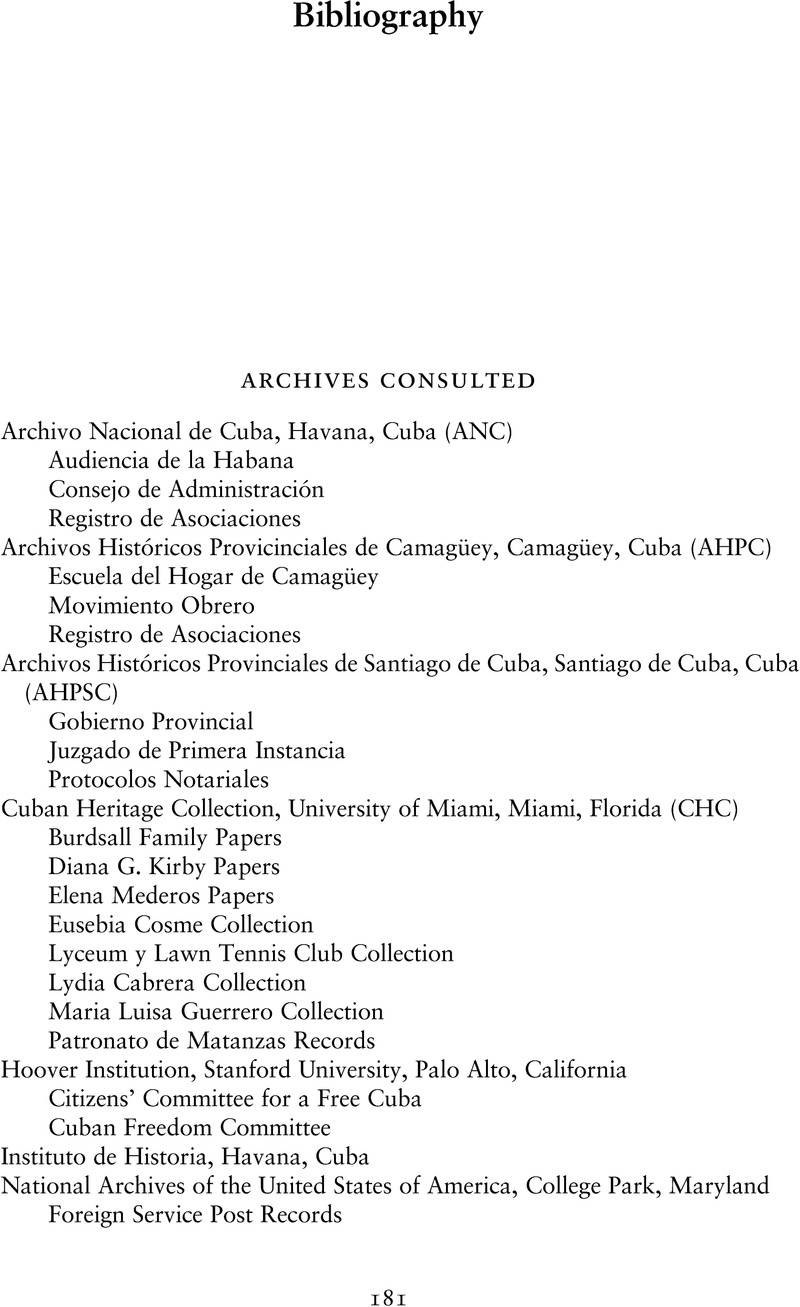Book contents
- Hierarchies at Home
- Afro-Latin America
- Hierarchies at Home
- Copyright page
- Dedication
- Contents
- Figures
- Tables
- Acknowledgments
- Author’s Note
- Introduction The Violent Intimacy of Nation-Building, Race, and Gender Inside Cuban Households
- 1 Embodied Anxieties
- 2 Of Domestic (and Other) Offices
- 3 Stopping “Creole Bolshevism”
- 4 Patio Fascists and Domestic Worker Syndicates
- 5 Pushing the Present into the Past
- 6 Conjuring Ghosts
- Conclusion
- Bibliography
- Index
- References
Bibliography
Published online by Cambridge University Press: 18 August 2022
- Hierarchies at Home
- Afro-Latin America
- Hierarchies at Home
- Copyright page
- Dedication
- Contents
- Figures
- Tables
- Acknowledgments
- Author’s Note
- Introduction The Violent Intimacy of Nation-Building, Race, and Gender Inside Cuban Households
- 1 Embodied Anxieties
- 2 Of Domestic (and Other) Offices
- 3 Stopping “Creole Bolshevism”
- 4 Patio Fascists and Domestic Worker Syndicates
- 5 Pushing the Present into the Past
- 6 Conjuring Ghosts
- Conclusion
- Bibliography
- Index
- References
Summary

- Type
- Chapter
- Information
- Hierarchies at HomeDomestic Service in Cuba from Abolition to Revolution, pp. 181 - 194Publisher: Cambridge University PressPrint publication year: 2022

